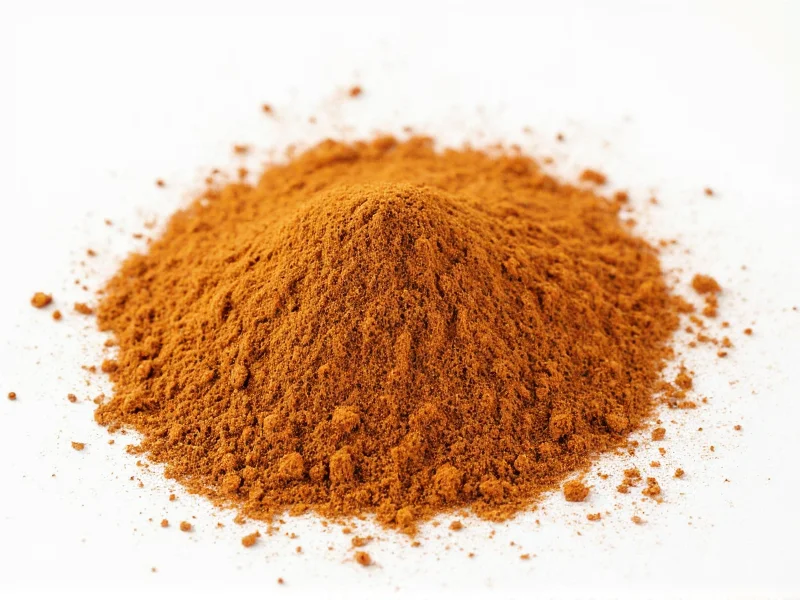Understanding Nutmeg's Flavor Profile
Nutmeg (Myristica fragrans) originates from the seed of a tropical evergreen tree native to Indonesia. Unlike capsaicin-containing spices such as cayenne or jalapeño peppers, nutmeg contains no compounds that trigger heat receptors. Instead, its primary flavor compounds—myristicin and elemicin—create warm, earthy notes reminiscent of clove and cinnamon without actual spiciness.
Chefs and food scientists classify nutmeg as a warm spice rather than a hot one. This distinction matters significantly in recipe development. When a recipe calls for “warm spices,” it typically refers to nutmeg, cinnamon, allspice, and cardamom—all delivering depth without mouth-burning heat. Understanding this difference prevents culinary mishaps, especially for those sensitive to capsaicin.
Spice Heat Comparison Chart
| Spice | Heat Level (Scoville Units) | Flavor Characteristics |
|---|---|---|
| Nutmeg | 0 | Warm, sweet, nutty, slightly peppery |
| Black Pepper | 100-500 | Sharp, pungent, mildly hot |
| Cayenne Pepper | 30,000-50,000 | Bright, fiery, intense heat |
| Habanero Pepper | 100,000-350,000 | Extremely hot, fruity undertones |
Why People Confuse Nutmeg as Spicy
The term “spicy” creates frequent misunderstanding. In culinary contexts, “spicy” can mean:
- Heat-inducing (capsaicin-based burning sensation)
- Flavorful (complex seasoning from spice ingredients)
Nutmeg falls exclusively in the second category. Its warm notes enhance dishes without overwhelming heat, making it ideal for delicate preparations like béchamel sauce, mashed potatoes, or baked goods where actual heat would disrupt flavor balance.
Culinary Applications of Nutmeg
Chefs value nutmeg for its ability to complement both sweet and savory dishes. Unlike hot spices that dominate flavor profiles, nutmeg works subtly in the background. Common applications include:
- Savory dishes: Sprinkled in pasta sauces, meatloaf, roasted vegetables, and creamy soups
- Sweet preparations: Essential in pumpkin pie, gingerbread, and custards
- Beverages: Traditional in eggnog and mulled wine
Professional kitchens often use freshly grated nutmeg rather than pre-ground versions, as the volatile oils responsible for its distinctive flavor dissipate quickly after grinding. A microplane produces the finest texture for even distribution.
Nutmeg Safety Considerations
While nutmeg isn't spicy hot, excessive consumption can cause adverse effects. Myristicin, the compound giving nutmeg its warm flavor, becomes toxic in large quantities (typically more than 1-2 teaspoons of ground nutmeg). Symptoms may include dizziness, nausea, and heart palpitations. This isn't related to spiciness but rather to the psychoactive properties of myristicin in high doses. Culinary amounts pose no risk for most people.
Substituting Nutmeg in Recipes
When a recipe calls for nutmeg and you're seeking similar warm notes without heat, consider these alternatives:
- Mace: Made from the outer coating of the nutmeg seed, offering nearly identical flavor
- Allspice: Provides warm notes with hints of cinnamon, clove, and nutmeg
- Garam masala: For complex warmth in savory dishes (contains nutmeg among other spices)
Remember that none of these substitutes will add actual heat—they enhance flavor complexity while maintaining the non-spicy characteristic that makes nutmeg valuable in balanced seasoning.
Frequently Asked Questions
Does nutmeg cause a burning sensation like chili peppers?
No, nutmeg does not cause any burning sensation. Unlike chili peppers containing capsaicin, nutmeg has zero heat on the Scoville scale. Its warm flavor comes from aromatic compounds like myristicin, not heat-inducing chemicals.
Can nutmeg be used as a substitute for hot spices?
Nutmeg cannot substitute for hot spices like cayenne or black pepper when heat is required. However, it works well as part of warm spice blends where complexity matters more than actual heat. For recipes needing both warmth and heat, combine nutmeg with a small amount of actual hot spice.
Why do some people think nutmeg is spicy?
The confusion stems from the dual meaning of “spicy.” While “spicy” often refers to heat (capsaicin-based), it also describes dishes seasoned with spices. Nutmeg is definitely a spice, but it doesn't produce heat. This linguistic overlap causes frequent misunderstanding about nutmeg's actual properties.
How much nutmeg is safe to consume daily?
Culinary amounts (up to 1/4 teaspoon daily) are generally safe for adults. Consuming more than 1-2 teaspoons of ground nutmeg may cause adverse effects due to myristicin content, including dizziness and nausea. These effects relate to toxicity, not spiciness, and occur only with excessive consumption well beyond normal cooking quantities.
Does fresh nutmeg taste different from pre-ground?
Yes, freshly grated nutmeg offers significantly brighter, more complex flavor than pre-ground versions. The volatile oils responsible for nutmeg's distinctive warm notes dissipate quickly after grinding. For best results in dishes where nutmeg plays a prominent role, use a microplane to grate whole nutmeg seeds just before adding to your recipe.











 浙公网安备
33010002000092号
浙公网安备
33010002000092号 浙B2-20120091-4
浙B2-20120091-4